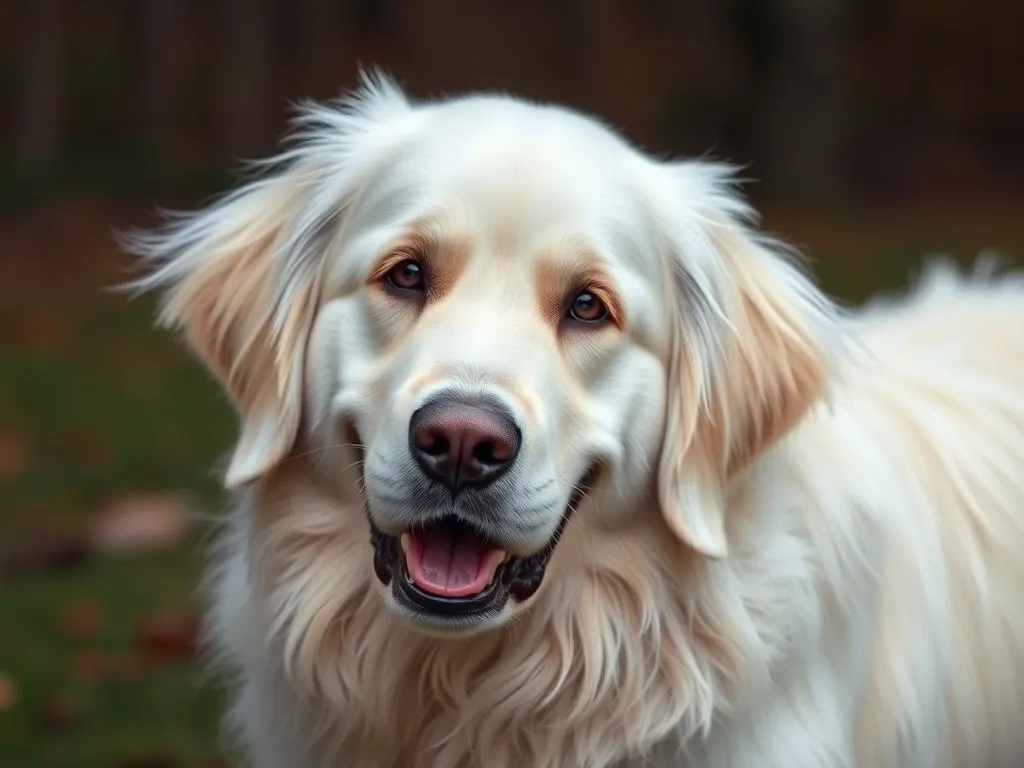
Introduction
Understanding dog breeds is essential for anyone considering canine companionship. Each breed has unique characteristics, temperament, and care requirements that can significantly impact the owner-pet relationship. This article will focus on the Great Pyrenees, a majestic breed known for its gentle nature and protective instincts. Whether you are a first-time dog owner or an experienced handler, this comprehensive guide will provide valuable insights into the Great Pyrenees, including its history, physical traits, care needs, and suitability for various lifestyles.
Overview of Dog Breeds
What is a Dog Breed?
A dog breed is a specific group of domestic dogs that share common ancestry and characteristics. These characteristics can include size, shape, coat type, and temperament. Understanding these traits is crucial for prospective owners, as they dictate the dog’s behavior, care requirements, and how well they fit into a household.
Categories of Dog Breeds
Dog breeds are generally categorized into several groups based on their original purpose or function:
- Working: Breeds that are bred to perform tasks such as guarding, pulling sleds, or search and rescue.
- Herding: Breeds that assist in managing livestock.
- Toy: Small breeds primarily kept for companionship.
- Sporting: Breeds that assist in hunting and retrieving game.
- Hound: Breeds used for hunting because of their keen sense of smell or stamina.
- Terrier: Breeds that were originally bred to hunt vermin.
- Non-sporting: A diverse group that doesn’t fit neatly into other categories.
- Miscellaneous: Breeds that are still being recognized or gaining popularity.
The Great Pyrenees falls under the working group, originally bred for guarding livestock in mountainous regions.
Introduction to the Great Pyrenees
Historical Background
The Great Pyrenees traces its origins back to the Pyrenees Mountains, where they served as livestock guardians for shepherds. Their primary role was to protect sheep from predators such as wolves and bears. Over the centuries, they have also become popular as family pets, thanks to their gentle demeanor and loyalty.
Physical Characteristics
The Great Pyrenees is a large and robust breed. Here are some notable physical traits:
- Size and Weight: Males typically weigh between 100-120 pounds, while females range from 85-100 pounds. They stand about 25-32 inches tall at the shoulder.
- Coat Color and Texture: Their thick, double coat is predominantly white, although some may have markings of badger, gray, or tan. This coat is designed to insulate against cold weather.
- Distinctive Features: The breed is known for its impressive fluffy coat, large size, and gentle expression, which makes them a striking presence.
Temperament and Behavior
The Great Pyrenees is known for its gentle and protective temperament. Here are some key behavioral traits:
- General Disposition: They are calm, affectionate, and patient, making them excellent companions for families and children.
- Interaction with Families and Children: They typically bond closely with their families, showing a protective instinct towards children and other pets.
- Socialization Needs and Traits: Early socialization is crucial to ensure they are well-adjusted and comfortable with various situations and people.
Care and Maintenance of the Great Pyrenees
Grooming Requirements
Grooming is an essential part of caring for a Great Pyrenees. Here are the key components:
- Coat Maintenance: Their thick coat needs to be brushed at least once a week to prevent matting and control shedding, which can be significant during seasonal changes.
- Bathing Needs: While they do not require frequent baths, it’s advisable to use a gentle dog shampoo when needed to maintain coat health.
Health Considerations
Like all breeds, the Great Pyrenees can be prone to certain health issues. Owners should be aware of:
- Common Health Issues: Conditions such as hip dysplasia and bloat can affect this breed. Regular check-ups with a veterinarian can help in early detection and management.
- Importance of Regular Veterinary Check-ups: Routine health assessments ensure that your pet remains healthy and can help in addressing any concerns before they become serious.
- Preventative Care and Vaccinations: Keeping up with vaccinations and preventative treatments is vital for the overall health of your Great Pyrenees.
Nutrition
A balanced diet is crucial for the health of a Great Pyrenees. Here are some nutrition guidelines:
- Recommended Diet: High-quality commercial dog food or a balanced homemade diet can provide the necessary nutrients. Consult with a veterinarian for specific dietary recommendations based on your dog’s age and health.
- Feeding Schedule and Portion Control: Adult dogs typically do well on two meals a day, while puppies may require more frequent feedings.
- Importance of Hydration: Ensure that your Great Pyrenees has access to fresh water at all times, especially during warmer months.
Training the Great Pyrenees
Basic Training Techniques
Training a Great Pyrenees requires patience and consistency. Here are some effective techniques:
- Importance of Early Socialization: Exposing your puppy to different environments, people, and other animals early on can help them develop into well-rounded adults.
- Recommended Training Methods: Positive reinforcement, such as treats and praise, works best for this breed. They respond well to encouragement rather than harsh discipline.
Obedience and Commands
Essential commands for a Great Pyrenees include:
- Essential Commands: Teaching commands like “sit,” “stay,” and “come” is vital for safety and obedience.
- Tips for Consistency and Patience: Maintaining a consistent training schedule and being patient will help reinforce learning and build a strong bond.
Addressing Behavioral Issues
While the Great Pyrenees is generally well-behaved, some challenges may arise:
- Common Behavioral Challenges: Issues such as excessive barking or stubbornness can occur if they are not properly trained or socialized.
- Strategies for Managing and Correcting Undesirable Behavior: Redirecting their attention, using positive reinforcement, and ensuring they receive enough exercise can help mitigate these issues.
Living with a Great Pyrenees
Ideal Living Conditions
The Great Pyrenees thrives in specific living conditions:
- Space Requirements: They require ample space to roam and play, making a large yard ideal. Apartment living can be challenging unless they receive sufficient outdoor time.
- Climate Considerations: While they are well-suited for colder climates due to their thick coat, they can struggle in extreme heat. It’s important to provide shade and cool water during hot days.
Exercise Needs
Regular exercise is crucial for a happy Great Pyrenees. Here’s what to consider:
- Daily Activity Requirements: They need at least an hour of exercise daily, which can include walks, playtime, or other activities.
- Suggested Exercise Routines: Engaging in various activities, such as hiking or swimming, can help keep your dog physically and mentally stimulated.
Compatibility with Other Pets
The Great Pyrenees is generally good with other pets, but there are considerations:
- Interaction with Other Dogs: They usually get along well with other dogs, especially if socialized early.
- Considerations for Households with Cats or Smaller Animals: While they can coexist with cats, supervision is necessary, especially with small animals, due to their instinct to guard.
Pros and Cons of Owning a Great Pyrenees
Advantages
Owning a Great Pyrenees comes with numerous benefits:
- Protective Nature and Loyalty: They are known for their strong protective instincts, making them excellent family guardians.
- Great for Families with Children: Their gentle disposition makes them fantastic companions for families, particularly those with children.
Challenges
However, potential owners should also consider some challenges:
- Grooming Demands: Their thick coat requires regular grooming, which can be time-consuming.
- Space and Exercise Requirements: They need ample space and daily exercise, making them less suitable for small apartments or sedentary lifestyles.
Conclusion
The Great Pyrenees is a magnificent breed that offers loyalty, protection, and companionship. With their gentle demeanor and strong guarding instincts, they can be the perfect addition to many families. However, owning a Great Pyrenees also requires a commitment to grooming, training, and providing a suitable living environment. Before welcoming a Great Pyrenees into your home, it’s essential to evaluate your lifestyle and ensure you can meet their needs. If you do, you’ll find a devoted friend and protector in this remarkable breed.









